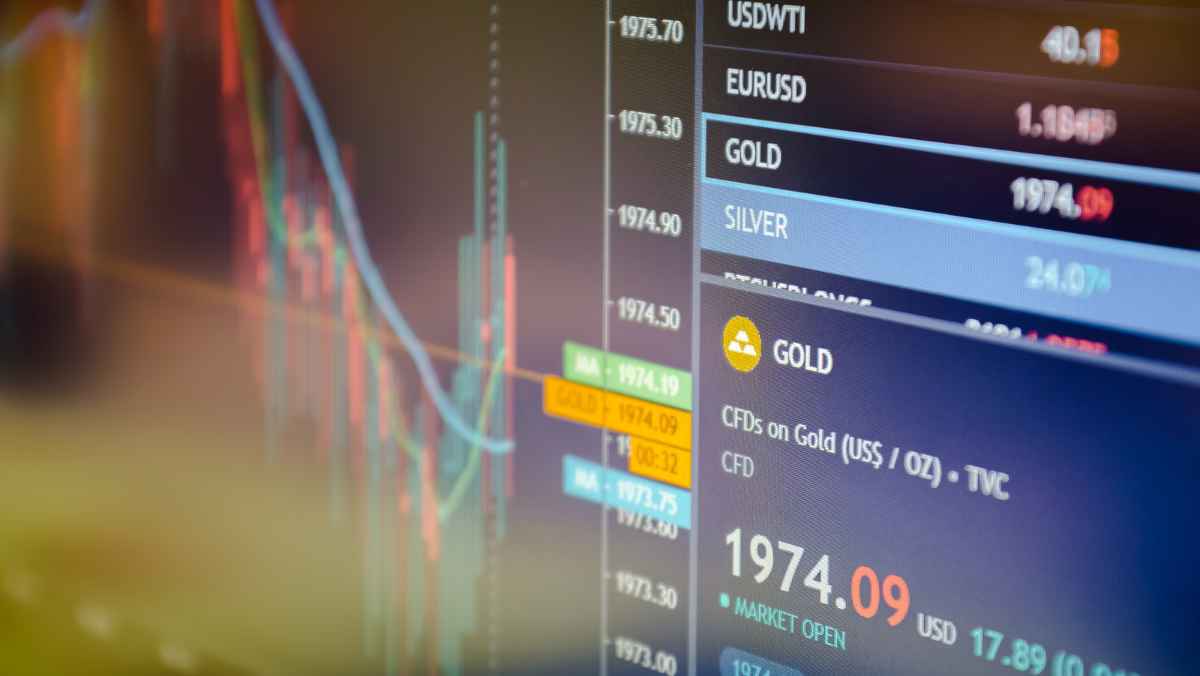Thursday Dec 7 2023 04:45

8 min

Ever wonder why gold is seen as such a stable store of value, and whether countries should return to the gold standard? Gold has been used as money for centuries and was once the basis for the global monetary system. As an investor, the rise and fall of the gold standard has implications for your portfolio today.
You've probably heard references to the gold standard before, but do you know what it means or how it worked? The gold standard tied the value of currencies directly to gold. For the better part of 200 years, most of the world's major economies operated under the gold standard. Its rise and fall shaped global economics and politics.
Understanding the gold standard, how it worked, why it ended, and arguments for and against its revival is key to understanding some of the forces that shape the global economy today.
In this article, we'll explore the history of the gold standard, how it impacted global trade and politics, why it eventually collapsed, and whether a return to the gold standard is even possible in today's world. Buckle up, it's going to be an interesting ride!

The gold standard originated in the 19th century as a system that valued currency against a fixed amount of gold. Most major economies adopted the gold standard, linking the value of their currencies to gold at a fixed price. This allowed global trade and investments to flourish with stable exchange rates.
In the early 1900s, the gold standard was operating at its peak. You could exchange U.S. dollars for gold at a fixed rate of $20.67 per ounce. Most global trades were conducted using pounds sterling, with London acting as the world's banking center. For decades, the gold standard ensured monetary discipline and stability.
However, World War 1 disrupted global trade and depleted gold reserves. In the 1930s, the Great Depression led countries to abandon the gold standard so they could increase the money supply and stimulate their economies. The U.S. abandoned the gold standard in 1933 and moved to a fiat money system with currency valuations based on faith in the government.
Today, some argue we should return to a gold standard to limit inflation and government power over the monetary system. However, others argue the gold standard is too rigid for today's global economy and limits a government's ability to influence economic growth. The debate continues, but for now, most of the world remains on fiat money.
The gold standard shaped the global economic system for over a century. Its rise and fall influenced monetary policy for generations and still impacts discussions of currency valuations today. While a relic of the past, the gold standard remains the standard by which all other monetary systems are measured.
The gold standard dominated global finance for decades but ultimately collapsed under the weight of geopolitical tensions and economic pressures.
In the early 20th century, most major currencies were backed by gold reserves. This meant governments couldn't just print money willy-nilly, keeping inflation in check.
After World War 1, countries went off the gold standard to pay for wartime costs. In the 1920s, they adopted it, but the stock market crash of 1929 led countries to abandon it again to stimulate spending.
By the 1930s, the Great Depression raged. President FDR took the U.S. off the gold standard so the government could increase the money supply, hoping to boost growth. Other nations followed.
After WWII, the Bretton Woods system made the U.S. dollar the world's reserve currency, convertible to gold. But ballooning U.S. debt and inflation eroded confidence in the dollar. By 1971, President Nixon unpegged the dollar from gold. The gold standard was dead.
The gold standard brought price stability but restricted governments' ability to influence their economies. Its collapse allowed greater flexibility but also loosened constraints on money creation.
Today, some argue for a return to the gold standard to curb inflation. But others say it's too rigid for modern economies. The debate continues on whether gold should again be the anchor of the global financial system.

The gold standard debate is complex with valid arguments on both sides. Some economists argue for a return to the gold standard, believing it provides monetary discipline and stability. However, others argue that the gold standard is too rigid and limits governments’ ability to stimulate economic growth during times of financial crisis.
Returning to the gold standard could reduce inflation and limit government power over the money supply. Tying the value of currency to gold prevents governments from printing money excessively, which some believe leads to inflation. However, limiting the money supply could hamper governments’ ability to respond to economic downturns and lead to price instability.
There may not be enough gold in reserves to support major economies. The gold supply is limited, and there may not be enough to back the amount of currency in circulation for large economies like the US. This could constrain economic growth.
The price of gold is volatile and could destabilize the economy. The price of gold is constantly changing in the open market based on many factors like demand, mining production, and geopolitical events. Linking currency to a volatile asset like gold could introduce economic instability.
Most modern economies have moved away from the gold standard. No major economy currently backs its currency 100% with gold. Modern monetary policy focuses more on controlling inflation and stabilizing the business cycle.
The gold standard debate involves complex, multi-dimensional issues. While a gold standard could theoretically provide more stable prices and limit government overreach, there are also risks around limiting policy options, gold supply constraints, and price volatility. There are good arguments on both sides, and reasonable people can disagree on the best approach.
So there you have it, the gold standard from a historical perspective and what it means today. While the gold standard is long gone, its impact on global economics and policy is still felt. As you've seen, the gold standard has its pros and cons, and there are good arguments on both sides regarding whether we should bring it back.
Either way, understanding how it shaped our financial system and economy in the past helps provide context for current events and debates. Now you're armed with the knowledge about how we got to where we are today. The gold standard may be history, but its legacy lives on.
Join markets.com today and start trading like a pro.
"When considering "CFDs" for trading and price predictions, remember that trading CFDs involves a significant degree of risk and could result in capital loss. Past performance is not indicative of any future results. This information is provided for informative purposes only and should not be considered investment advice."